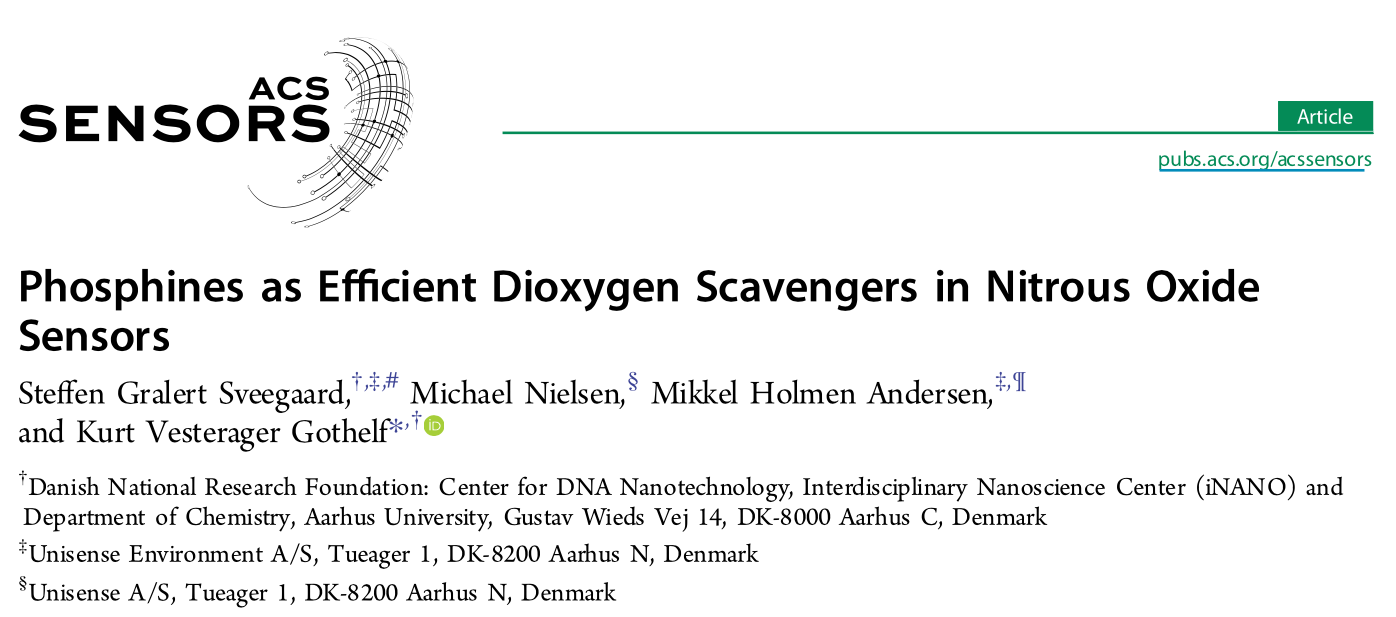PAPER: Phosphines as Efficient Dioxygen Scavengers in Nitrous Oxide Sensors

ACS SENS 2017, 2, 695-702, doi: 10.1021/acssensors.7b00152
Sveegaard, S. G, Nielsen, M, Andersen, M. H, and Gothelf, K. V.
Danish National Research Foundation: Center for DNA Nanotechnology, Interdisciplinary Nanoscience Center (iNANO) and Department of Chemistry, Aarhus University, Gustav Wieds Vej 14, DK-8000 Aarhus C, Denmark
Unisense Environment A/S, Tueager 1, DK-8200 Aarhus N, Denmark
Unisense A/S, Tueager 1, DK-8200 Aarhus N, Denmark
Abstract
A current challenge for development of amperometric sensors for the greenhouse gas nitrous oxide (N2O) is their sensitivity toward dioxygen and trace water. The need for aqueous dioxygen scavengers in front of the sensor implies a background signal from penetrating water vapor. In this paper, we introduce substituted phosphines as dioxygen scavengers and demonstrate the application in a dioxygen-insensitive N2O sensor. Suitably substituted phosphines have been synthesized to achieve good solubility properties in the electrochemically inert solvent propylene carbonate. Several sensors with and without physical separation of the sensing and dioxygen scavenging compartments were made and compared to current commercial sensors. The use of phosphines soluble in organic solvents as dioxygen scavengers yielded a higher sensitivity, albeit with longer response time. Proof-of-concept N2O sensors without the physically separated dioxygen scavenger chamber showed a greatly enhanced sensitivity with a comparable response time, thus demonstrating the possibility for greatly simplified sensor construction.
